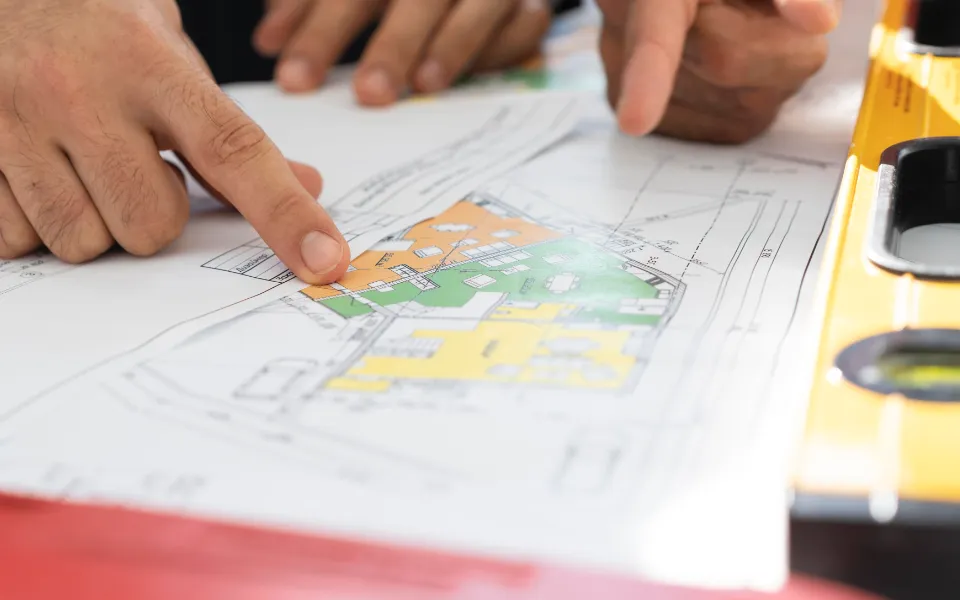When investing in off-plan property, the survey plan is one of the most crucial documents. It defines the actual land on which the proposed development will sit.

Developers often use this plan to secure approval and attract buyers. Without a valid survey plan, your investment is on shaky ground. This document is your proof that the land exists, is clearly defined, and is free from encumbrances.
How to Authenticate a Survey Plan When Buying Off-Plan Property

Here is a step by step guide on how to authenticate a survey plan when buying off-plan property:
1. Check the Developer’s Surveyor’s Seal and Registration
In off-plan transactions, developers work with registered surveyors to map the land. Ensure that the survey plan carries a professional seal and signature from a licensed surveyor.
The seal must include the surveyor’s name and registration number. If this information is missing or unclear, the survey plan may not be valid. This is a major red flag in off-plan investments.
2. Verify the Survey Plan Number at the Surveyor General’s Office
Every authentic survey plan used for an off-plan property must have a unique reference number. Request this number from the developer or their agent.
Then, conduct a verification at the Surveyor General’s office. This search will confirm if the survey plan is registered, genuine, and tied to the proposed development site.
If the plan isn’t listed in the official records, the project may be sitting on unverified land.
3. Inspect the Coordinates to Confirm Land Location
The coordinates on the survey plan determine the precise location of the land. They must match the physical site of the off-plan project.
Use a GPS device or hire a professional surveyor to crosscheck the coordinates. This process ensures the plan truly corresponds to the land being marketed.
Mismatched coordinates may indicate fraud or misrepresentation.
4. Look Out for Proper Beacons and Site Markers
Reputable developers install survey beacons on the land before launching off-plan sales. The beacon numbers must align with those shown in the survey plan.
If you’re visiting the site, check for visible markers or pegs. Their presence and accuracy help confirm that the plan has been executed on the ground.
Missing or displaced beacons suggest the survey may be incomplete or manipulated.
5. Confirm Lodgement with the Surveyor General’s Office
A legitimate off-plan development must submit its survey plan for approval and lodgement. This process ensures the land is properly recorded in the government’s system.
Ask the developer for a copy of the evidence of lodgement. This document proves the survey has been officially received. If the developer cannot provide it, proceed with caution.
6. Engage a Licensed Surveyor for an Independent Check
Before committing to an off-plan purchase, consider hiring your own registered surveyor. They can assess the plan’s validity and visit the site.
Their findings will confirm whether the land in question matches the plan and whether it’s suitable for development.
Independent verification helps you avoid falling victim to land scams or deceptive marketing.
7. Confirm the Land Is Not Under Government Acquisition
Developers may unknowingly, or knowingly, sell off-plan units on land under government acquisition.
Use the survey coordinates to check whether the land is within an acquisition zone. The Surveyor General’s office can help with this search.
If the land hasn’t been excised or released, then any structure planned on it may be demolished later.
8. Ensure the Survey Reflects the Intended Project Layout
For off-plan properties, the survey plan must reflect the actual boundaries and layout of the development.
Cross-reference it with the site plan and building approval documents. If there are inconsistencies, raise questions.
A mismatched survey can lead to disputes over space allocation, especially in multi-unit projects.
9. Request an Updated Copy of the Survey Plan
Survey plans should reflect current land conditions. Some developers use outdated surveys that may no longer be valid.
Ask for the most recent version, particularly if the project has been in planning stages for a while.
A current survey plan confirms that the land is still intact, accessible, and undeveloped before construction begins.
In conclusion, authenticating the survey plan in off-plan property deals is a vital step. It gives you legal assurance and protects your financial commitment.
Never rely solely on what the developer tells you. Take the time to verify all survey details, engage professionals, and consult with the Surveyor General’s office. A few extra steps today can save you millions in the future.
Related Post:




